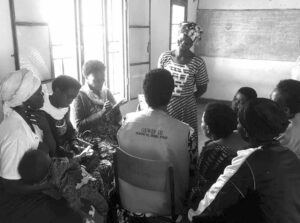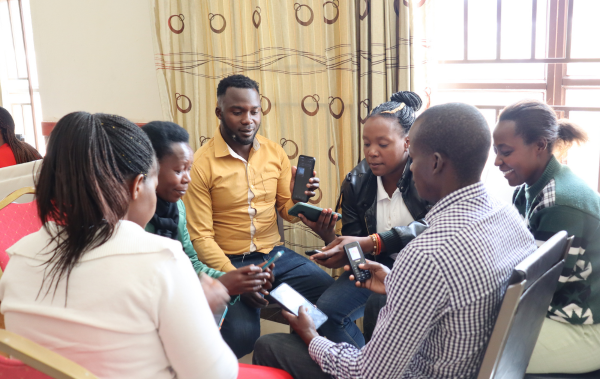Lessons for all places
March 25th, 2024
Today I would like to share my experience of developing e-learning courses on financial literacy for rural women who have no internet access. This was our second assignment from CARE Rwanda. The first one was to create interactive e-learning courses in Easy Generator for women entrepreneurs in rural areas. The courses were fantastic, but, the women faced a significant obstacle. They could not access the courses as they did not have smartphones or internet connectivity.
This realisation led us to brainstorm alternative solutions for our second assignment. Someone said, “But these women, most of them have feature phones, right? They even watch movies and listen to songs on their SD cards on their phones. So, let’s make videos that can be played on either feature phones or smartphones.”
CARE was open to the idea, but we wanted to assess how the previously developed materials were being used and if our new idea could work.

With a colleague and a Care representative, I visited a group of 20 women in Nyanza. We asked them to show us how they used the materials in their training sessions. At the beginning of the training, the master trainer informed us that she did not have internet data. We asked if anyone had a smartphone with internet, but only two women had smartphones, while the rest had feature phones. This led us to realise that our e-courses, as well as YouTube videos, were challenging for them to access.
This experience reminded me of my struggles to access online education in high school. I did not have a proper working laptop and lousy internet. I realised how it is important to create a solution that would work for these women.
We presented our idea of creating videos for feature phones to the women. We gave them the challenge of retrieving a video from another person’s phone. They were familiar with transferring videos to their phones using disk burners in their village. Some of the women also knew how to share content via Bluetooth, while others asked their children for assistance. We found out that they had many strategies!
We decided to develop simple videos for feature phones: podcasts with supporting images. We included exercises where the listeners could pause the video and reflect on their businesses and real-life situations.
Creating a video with only images seemed easy, but we faced technical challenges that led us into the world of image manipulation. We needed to ensure that the visuals were simple and understandable, fit for a 2 x 3 cm screen. We manipulated images from our library, adjusted clothing colours, altered arm positions and merged or added people to a scene.
During a workshop to validate the new materials, all the Care master trainers praised our work. They were happy that everyone, regardless of phone type, could listen to any topic at their own pace, anywhere, anytime, and without internet connectivity. One of them even said, “These are indeed the lessons I can follow while working in the field.”
Our journey to create digital financial lessons has once again emphasised the importance of understanding the audience’s needs before designing a course. As we conclude this project, we are filled with hope and remain committed to developing further solutions that are beneficial to those we assist.
Abdulkalim Sezirahiga

